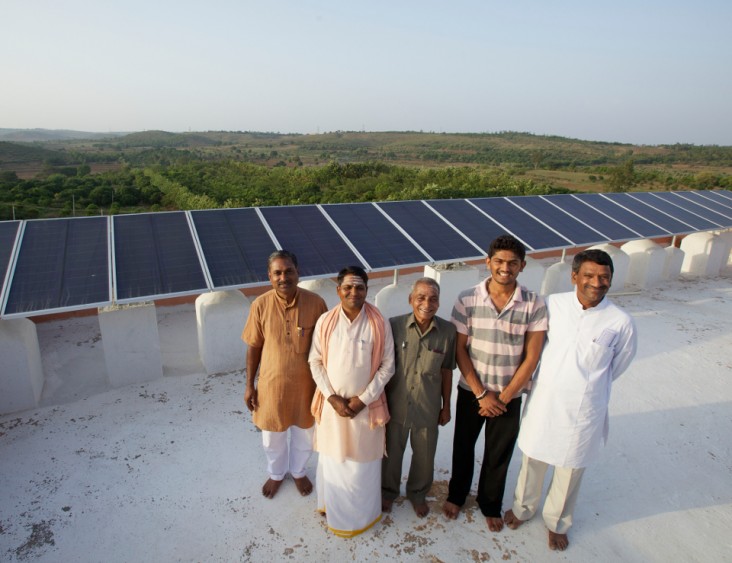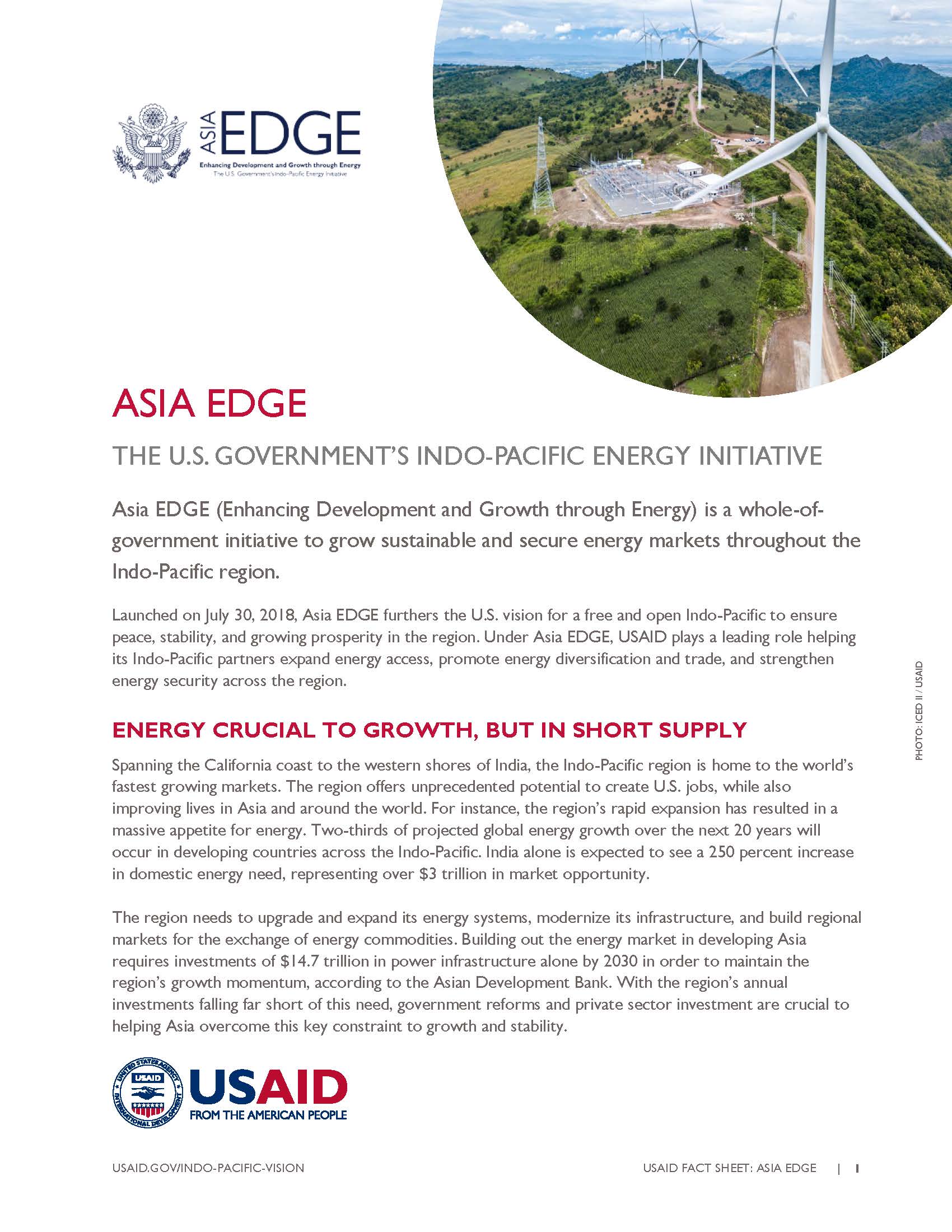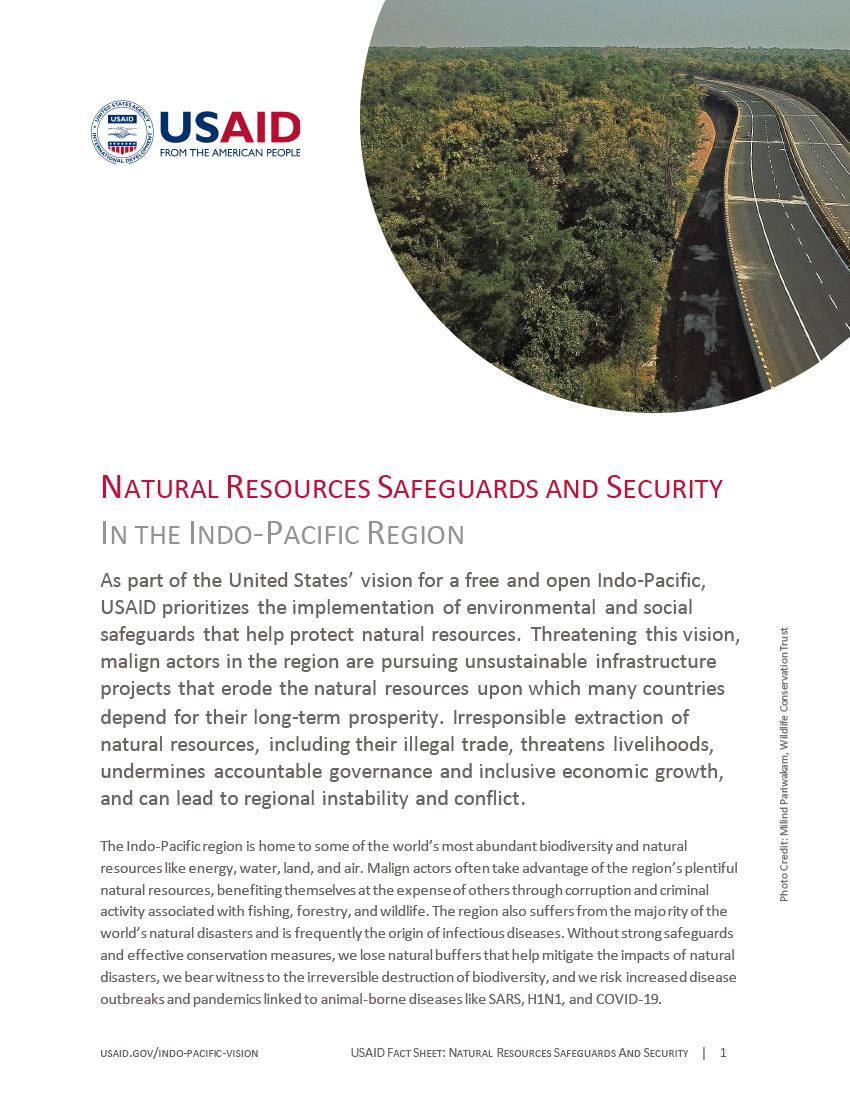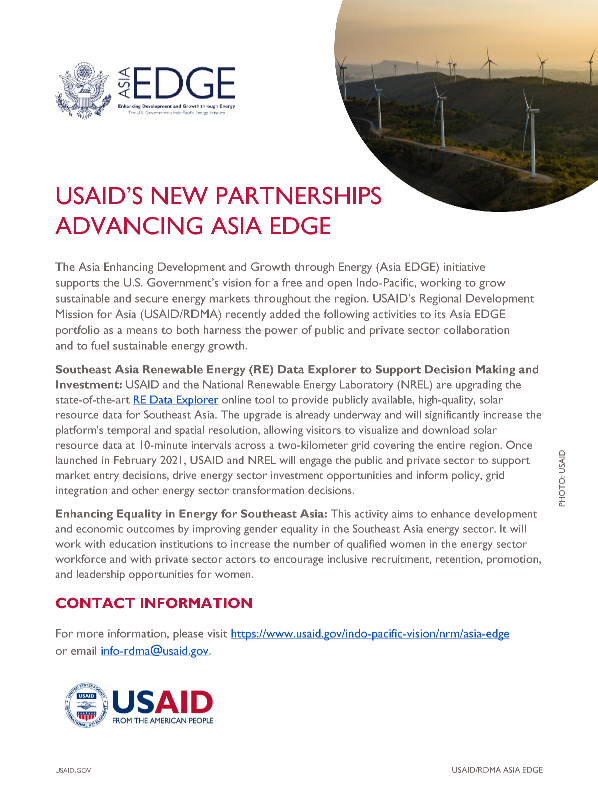- Where We Work
- Africa
- Asia
- Europe and Eurasia
- Latin America and the Caribbean
- Middle East
- Mission Directory
Speeches Shim
The Indo-Pacific region is rich in forests, fisheries and other natural resources. The region’s incredible biodiversity includes the world’s largest concentration of marine life and the world’s largest area of mangrove forests. Countries depend on their natural resources, including energy, water, land and clean air, for their long-term growth.

Yet the sustainability of these natural resources—and the vulnerable communities that depend on them for their livelihoods—are threatened by irresponsible infrastructure development and reckless resource extraction that ignore environmental and social safeguards. Unsound infrastructure development along the Mekong River in Southeast Asia, for example, threatens the food, water and livelihoods of some 60 million people. Furthermore, high rates of transnational crime in Asia are associated with illegal fishing, logging and wildlife and contribute to rapid environmental degradation while also undermining the regional stability that underpins a free and open Indo-Pacific. Global annual losses from illegal, unreported and unregulated fishing and seafood fraud is estimated at up to $23 billion annually.
USAID partners with countries across the region to strengthen their responsible management of natural resources, including vital energy sources. We help strengthen natural resource management laws and promote the adoption and enforcement of international environmental standards. We foster private sector engagement on sustainable supply chains, energy sector transformation and safeguards. We focus on supporting water and energy security, legal and sustainable fishing and timber, and efforts to combat transnational environmental crime, including that associated with wildlife poaching and trafficking. We work through regional platforms including the Lower Mekong Initiative.
USAID plays a leading role in Asia EDGE (Enhancing Development and Growth through Energy), an interagency initiative that works to strengthen energy security and expand energy access across the Indo-Pacific region.
USAID brings extensive experience to the table. Our past achievements in this area include:
- In Vietnam, USAID is working closely with the Government to develop and implement policies that support scaling up the generation of renewable energy. This has contributed to a massive increase in solar energy production in just two years—from less than 2 percent of the country’s total power generation in 2017 to over 10 percent in 2019. In addition, USAID worked with Vietnamese investors to build and grid-connect seven renewable energy projects in 2019 utilizing U.S. technologies and expertise.
- Between 2015 and 2020, with USAID support, Southeast Asian nations developed and implemented sustainable fisheries management plans, protecting marine habitats totalling an area measuring more than 1.5 times the size of the United States.
Resources
Fact Sheet: Asia EDGE
Asia EDGE Fact Sheet ![]() (pdf - 373k)
(pdf - 373k)
Asia EDGE (Enhancing Development and Growth through Energy) is a whole-of-government initiative to grow sustainable and secure energy markets throughout the Indo-Pacific region.
Fact Sheet: Natural Resources Safeguards and Security in the Indo-Pacific Region
As part of the United States’ vision for a free and open Indo-Pacific, USAID prioritizes the implementation of environmental and social safeguards that help protect natural resources.
Fact Sheet: USAID's New Partnerships Advancing Asia EDGE
USAID's New Partnerships Advancing Asia EDGE ![]() (pdf - 155k)
(pdf - 155k)
USAID’s Regional Development Mission for Asia (USAID/RDMA) recently added the following activities to its Asia EDGE portfolio as a means to both harness the power of public and private sector collaboration and to fuel sustainable energy growth.




Comment
Make a general inquiry or suggest an improvement.